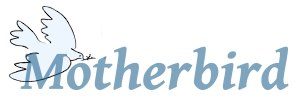Change Upon Change | Poem by Elizabeth Barrett Browning
————————————————————————–
Five months ago the stream did flow,
The lilies bloomed within the sedge,
And we were lingering to and fro,
Where none will track thee in this snow,
Along the stream, beside the hedge.
Ah, Sweet, be free to love and go!
For if I do not hear thy foot,
The frozen river is as mute,
The flowers have dried down to the root:
And why, since these be changed since May,
Shouldst thou change less than they.
And slow, slow as the winter snow
The tears have drifted to mine eyes;
And my poor cheeks, five months ago
Set blushing at thy praises so,
Put paleness on for a disguise.
Ah, Sweet, be free to praise and go!
For if my face is turned too pale,
It was thine oath that first did fail, —
It was thy love proved false and frail, —
And why, since these be changed enow,
Should I change less than thou.
————————————————————————–
Elizabeth Barrett Browning – Poet | Academy of American Poets
Elizabeth Barrett Browning – Wikipedia
Buy Elizabeth Barrett Browning
at Amazon
Buy Elizabeth Barrett Browning
at Barnes and Noble
————————————————————————–


